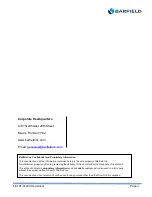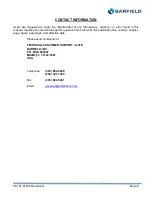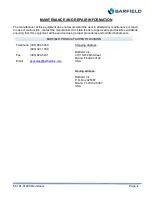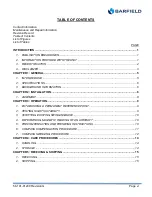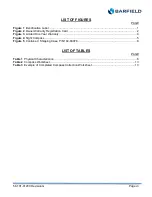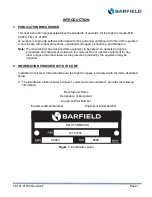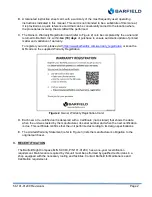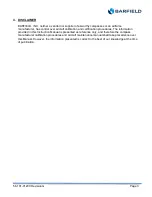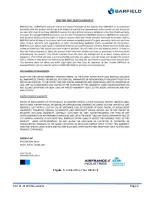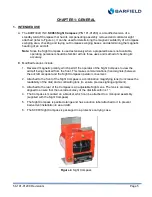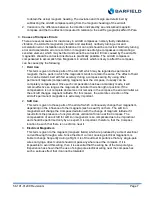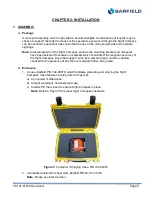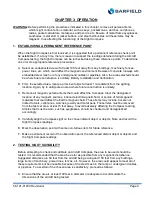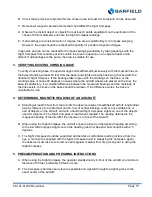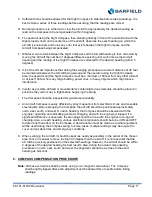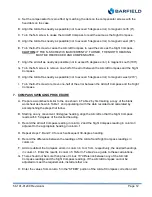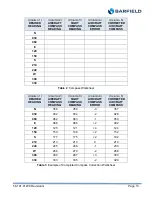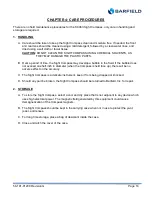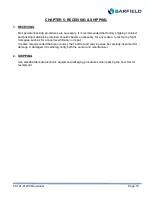
56-101-01200 Revision G
Page 7
to obtain the actual magnetic heading. The deviation and its sign are determined by
subtracting the aircraft compass reading from the magnetic heading of the aircraft.
2. Variation is the difference between the direction indicated by an undisturbed magnetic
c
ompass and the true direction measured in relation to the earth’s geographical North Pole.
C.
Causes of Compass Errors
There are several causes for inaccuracy in aircraft compasses: namely faulty installation,
vibration, the Aircraft’s magnetism (metallic and electrical), northerly turning error and
acceleration error. Installation and vibration error can and should be corrected. Northerly turning
error and acceleration error are common in magnetic needle type compasses incorporating a
sensitive element, which may be tilted and cannot be corrected. Errors caused by the a
ircraft’s
magnetism should be corrected insofar as is practically possible. The aircraft compass is
compensated to accomplish this. Magnetism in aircraft, which is likely to affect the compass,
can be caused by the following:
1.
Hard Iron
This term is given to those parts of the Aircraft, which may be regarded as permanent
magnets; that is, parts in which the magnetism tends to remain the same. The effect of hard
iron can be determined with fair accuracy during a compass swing. By using other
permanent magnets (compensating magnets) near the compass, it usually can be
completely compensated. Once such compensation has been accurately made, it will
remain effective so long as the magnets do not alter their strength or position. If the
compensation is not complete and some error remains in the compass, the error will alter as
the aircraft changes magnetic latitude. For this reason, the accurate correction of the
a
ircraft’s permanent magnetism is extremely important.
2.
Soft Iron
This term is given to those parts of the aircraft which continuously change their magnetism,
depending on the influence of other magnets (such as earth) on them. The soft iron
magnetism will change the Compass deviation with the change of magnetic latitude if it
results from the presence of unsymmetrical, vertical soft iron near the Compass. The
compensation of an aircraft for soft iron magnetism is so complicated as to be impractical
and should be performed only by an expert. It is important, therefore, that the Compass
location be such that there is no soft iron near it.
3.
Electrical Magnetism
This term is given to the magnets (magnetic fields) which are produced by a direct electrical
current flowing through a wire. Since the direct current, causing electrical magnetism, is
liable to change frequently during a flight, it is of the utmost importance that any single-pole
wires carrying a direct current should not pass anywhere near the compass. If it is
impossible to avoid this wiring, then it is essential that the wiring be of the two-pole type.
Experience has shown that the use of single-pole electrical wiring near the compass has
such a serious effect that it cannot be tolerated.


